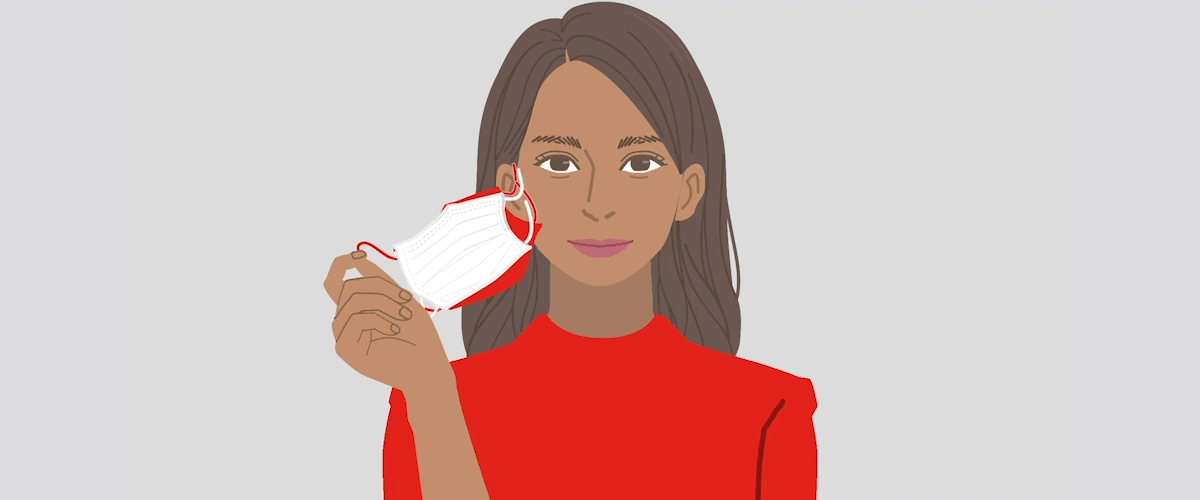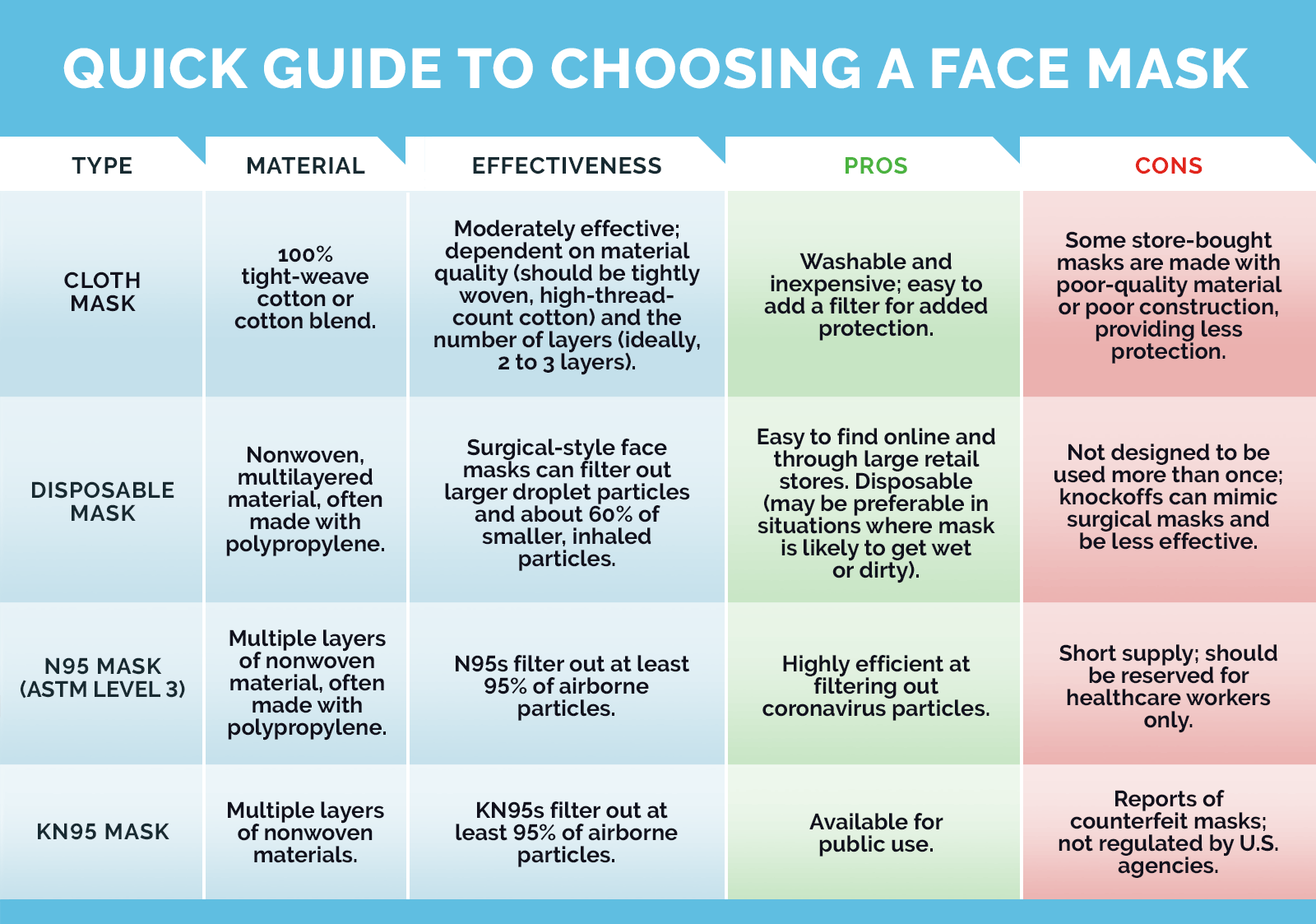Should You Be Double Masking?
The reasons why wearing two masks may be advised and which masks offer more protection.

With the recent spread of new coronavirus variants, some people have begun wearing two masks at the same time — double masking. On February 10, the Centers for Disease Control and Prevention (CDC) released new guidance that confirmed that wearing well-fitted masks or wearing two masks offers added protection. “I think it’s a good time to think about the quality of masks for the public in general, especially with the reports around the new variants and increased transmissibility,” says Dr. Matthew Simon, associate hospital epidemiologist and assistant attending physician at NewYork-Presbyterian/Weill Cornell Medical Center. “The variants have obviously gotten everyone’s attention and increased interest in enhancing efforts to prevent transmission of COVID-19.”

Dr. Matthew Simon
Health Matters spoke with Dr. Simon, an assistant professor of medicine in the Division of Infectious Diseases at Weill Cornell Medicine, to understand the different kinds of masks and why it might make sense to start double masking.
Is double masking a good idea?
Dr. Simon: Let’s start off with one key point, and that is: Any mask or face covering is better than no mask or face covering. Data has proved that. In terms of double masking, the CDC now lists it as one way to improve protection from the virus, and some leaders, such as Dr. Anthony Fauci, the nation’s top infectious disease expert, have said they often double mask. If worn correctly, two masks can improve mask fit and serve as an additional barrier to filter infectious particles. Recent laboratory-based experiments performed on dummies have shown that exposure to potentially infectious small particles (aerosols) decreased by about 96% when both dummies were double masked.
Also, it’s important to remember that just because someone is wearing two masks, they should not forget about all the other important behaviors to prevent transmission, like social distancing, avoiding crowded indoor environments when possible, and hand hygiene.
What makes a face mask high-quality?
The two most important characteristics that people should look for in a good, high-quality face mask are the fit and filtration. The fit prevents air from leaking around the edges of the mask, and the filtration blocks potentially infectious respiratory droplets. If it’s a cloth mask, it should be made of tightly woven fabric, like cotton or a cotton blend, with a high thread count, and have at least two layers. This allows the mask to effectively block or filter infectious particles. The mask should fit snugly so that it covers the face and mouth and extends below the chin. Ideally, it should be breathable and comfortable too, because you have to be able to wear it and not worry about readjusting or taking it off and putting it back on.
A few options that the CDC now recommends to improve mask fit include wearing a mask with a nose wire, using a mask fitter or brace, or, for disposable masks, knotting and tucking the ear loops at the edge of the mask. This knotting and tucking method was also evaluated in the recent study with laboratory dummies and also found to be highly effective at reducing exposure to potentially infectious aerosols. One way to check the fit of the mask is to cup your hands around the outside edges of the mask and breathe in/out several times, checking to see if air leaks out the sides or near your eyes.
What about medical-grade masks, like ASTM Level 3 and KN95 masks?
ASTM Level 3 masks are considered medical-grade masks and — like the N95 respirator masks — they should still be reserved for healthcare workers. KN95 masks, which are available for public use, have a similar design to N95 masks and may have a high level of protection. However, there have been issues with counterfeit and quality standards. The Food and Drug Administration lists certain KN95s that have been evaluated and passed quality standards, which is worth taking a look at before purchasing.
What are some ways to double mask or improve the filtration of a cloth mask?
The recommended way to double mask is to wear a disposable mask underneath with a cloth face mask fitted on top of it. This technique allows the disposable mask to act as a filter, and the cloth mask provides an additional layer of filtration while improving the fit of the disposable mask.
Another recommended option is to wear a three-layer mask: A cloth mask made of a flexible, tightly woven fabric with a nonwoven high-efficiency filter material sandwiched between them the two cloth layers. Researchers suggest that a filter that’s akin to a vacuum bag filter, or nonwoven polypropylene, is highly effective at filtering small particles that are the size we worry about with COVID-19. A lot of the cloth masks have pockets where you can insert a filter. So a well-fitted cloth face mask with an added filter is thought to be equivalent to double masking.
Importantly, it is not recommended to wear two disposable masks on top of each other.

Should children double mask?
I know from personal experience, because I have a 3-year-old, how difficult it is to get them to wear one mask, let alone two. You don’t want kids to experience more discomfort by wearing two masks and risk them taking their masks off. Going back to those basic principles, children over the age of 2 should have a high-quality and comfortable, well-fitted mask that they’re able to wear consistently for potentially long periods of time.
Can double masking offer added protection from the new coronavirus variants?
We can’t say whether or not two masks offer more protection for those new variants as opposed to one. The most important thing is that everyone wears a mask. If everyone wears a mask, that’s going to be a big improvement and have a huge impact on transmission.
If you get the vaccine, do you still need to mask up?
Yes, just because someone is vaccinated does not replace the need to wear a mask in public.
A lot of work has been done in the past around personal protective equipment (PPE) for healthcare workers, but this is a huge shift in terms of thinking about PPE for the general public. I think there will be a lot more work in the future to have clear standards and guidance around what type of masks we should be wearing and what offers the most protection. I think the new CDC guidance is a nice practical step in this direction.
Matthew S. Simon, M.D., is an associate hospital epidemiologist and an assistant attending physician at NewYork-Presbyterian/Weill Cornell Medical Center. He is also an assistant professor of medicine in the Division of Infectious Diseases and an assistant professor of population health sciences in the Division of Comparative Effectiveness and Outcomes Research at Weill Cornell Medicine. Dr. Simon is board-certified in internal medicine and infectious diseases and acts as the program director for the Infectious Diseases Fellowship at NewYork-Presbyterian/Weill Cornell Medical Center.
